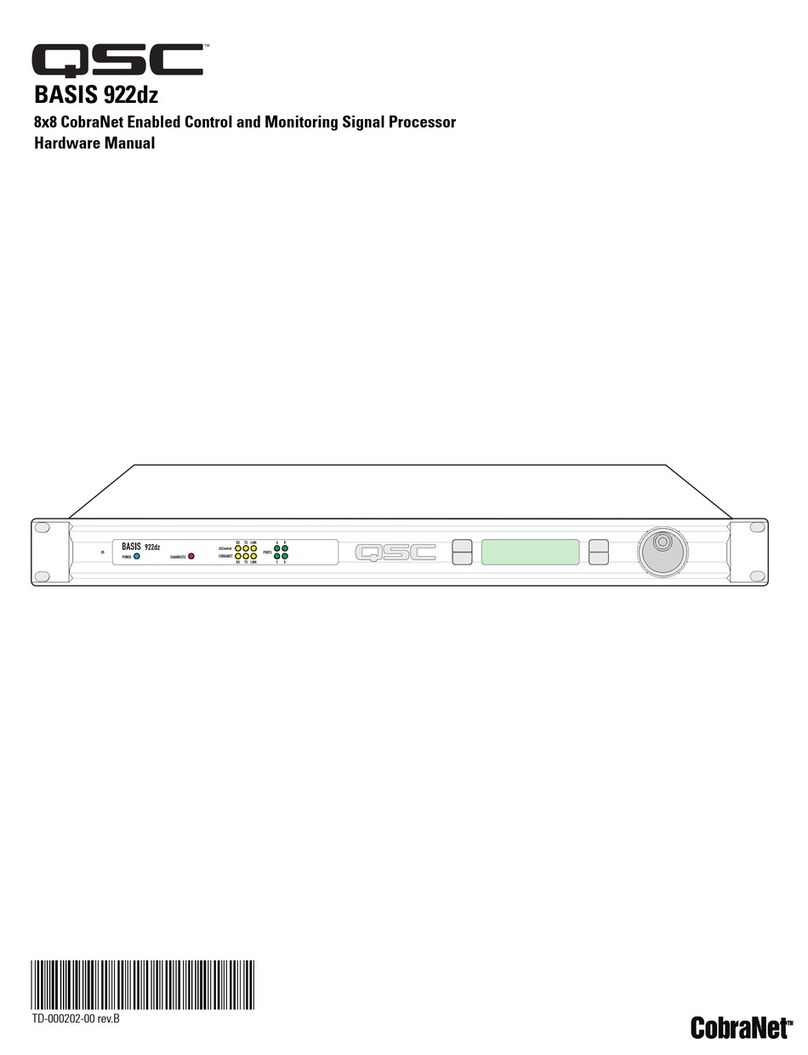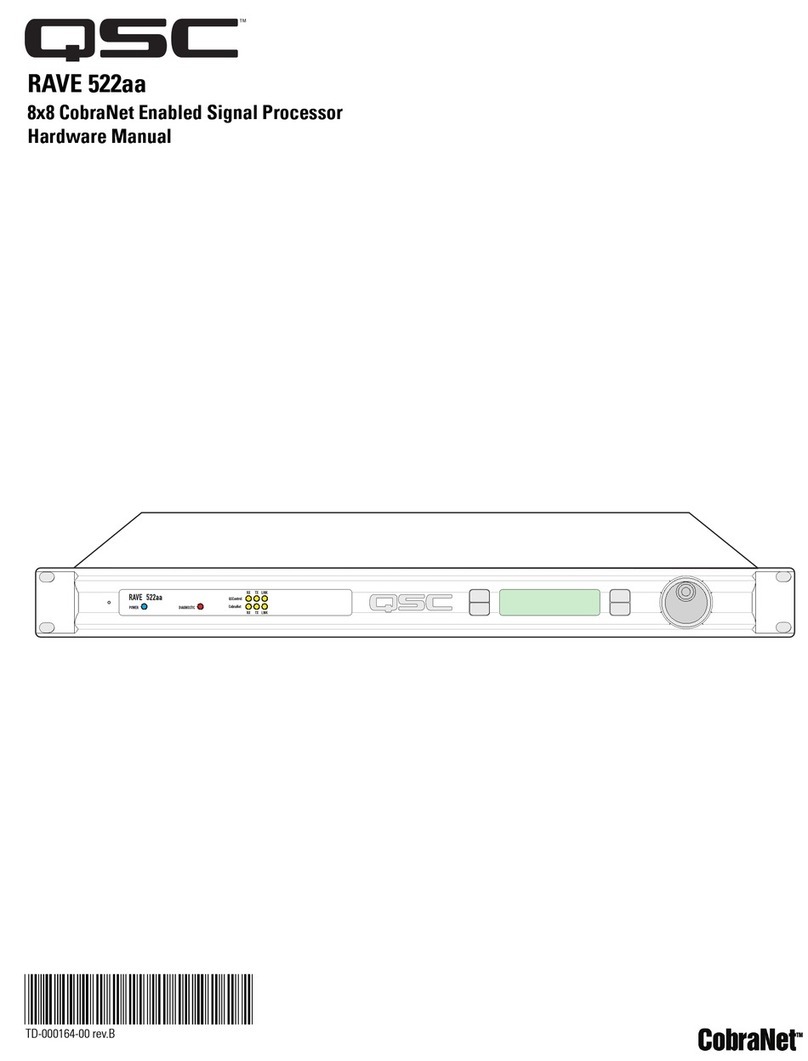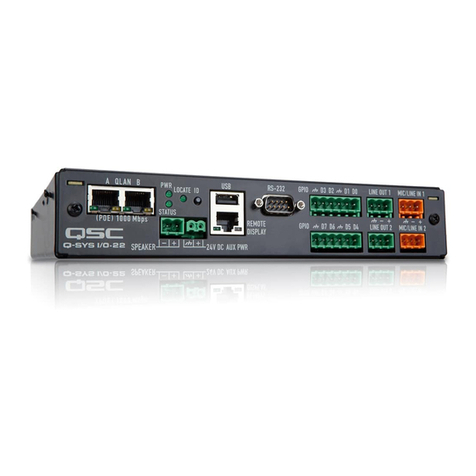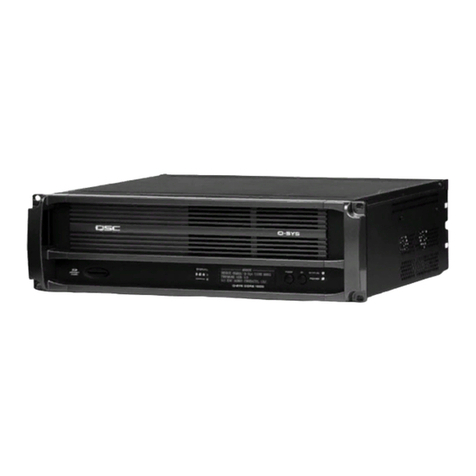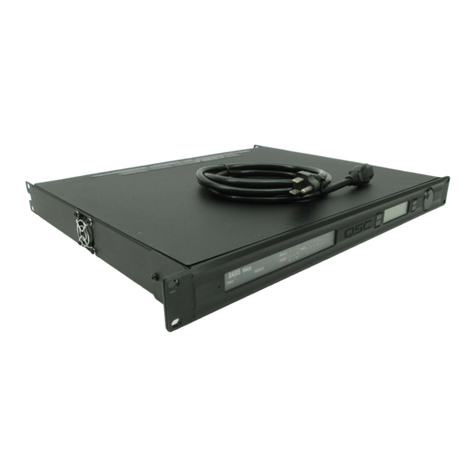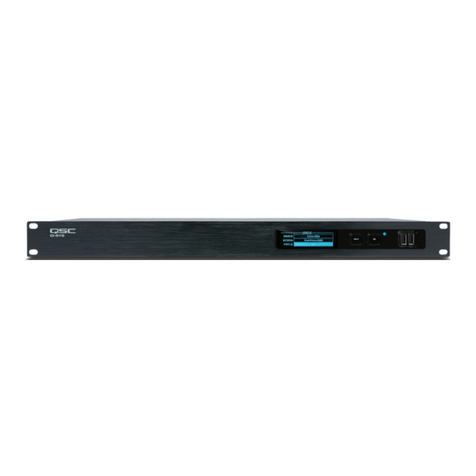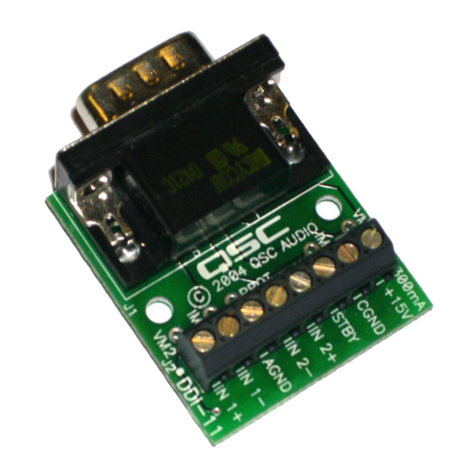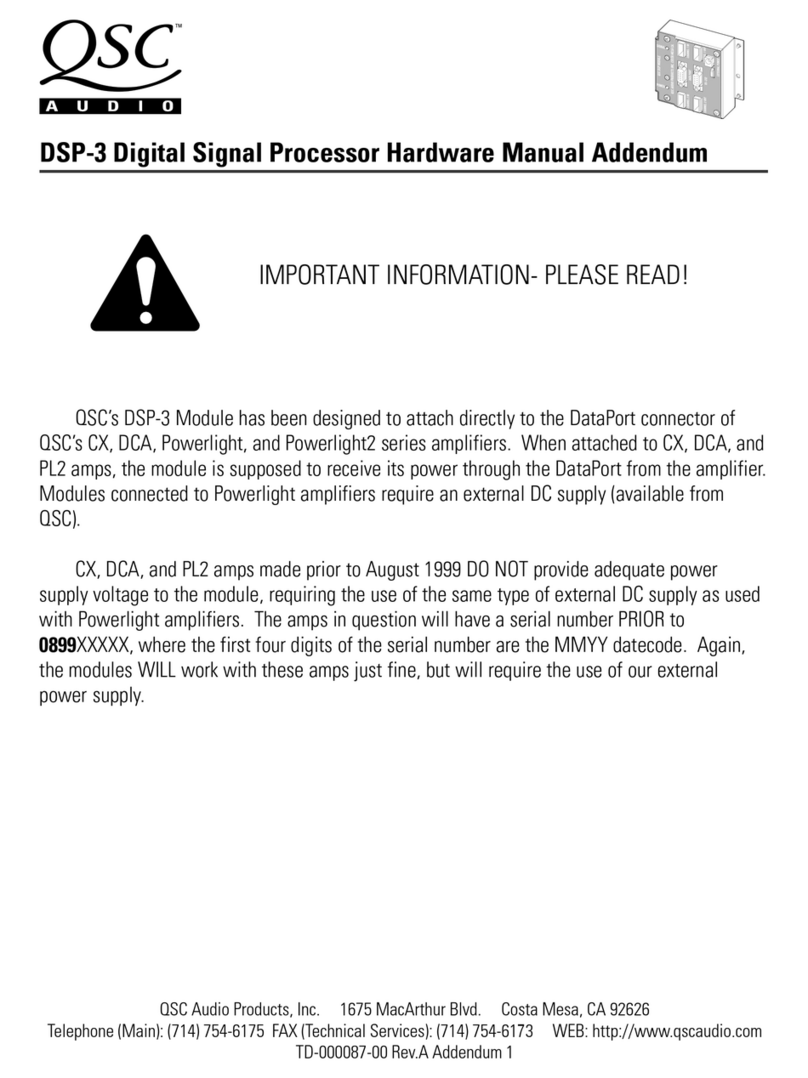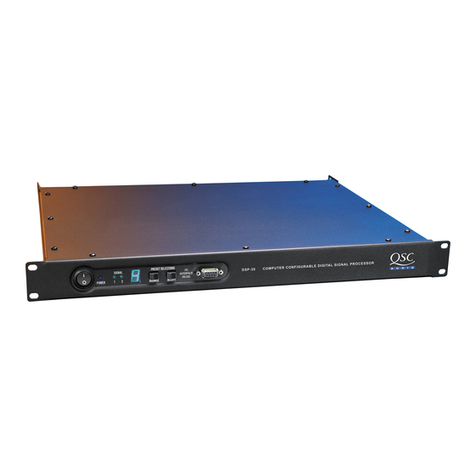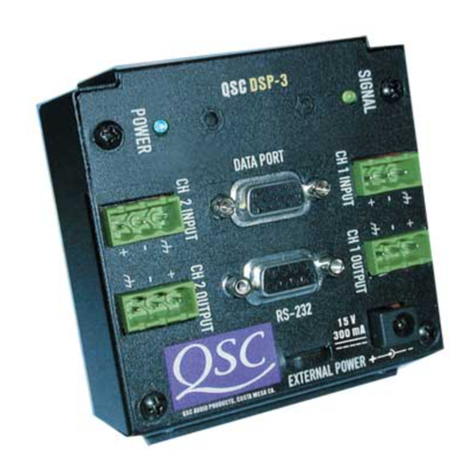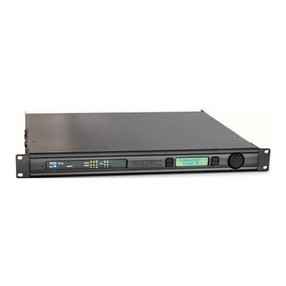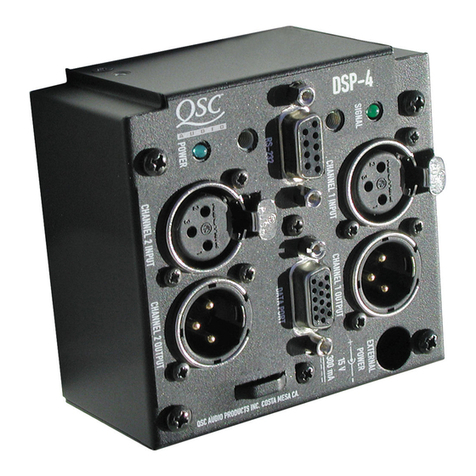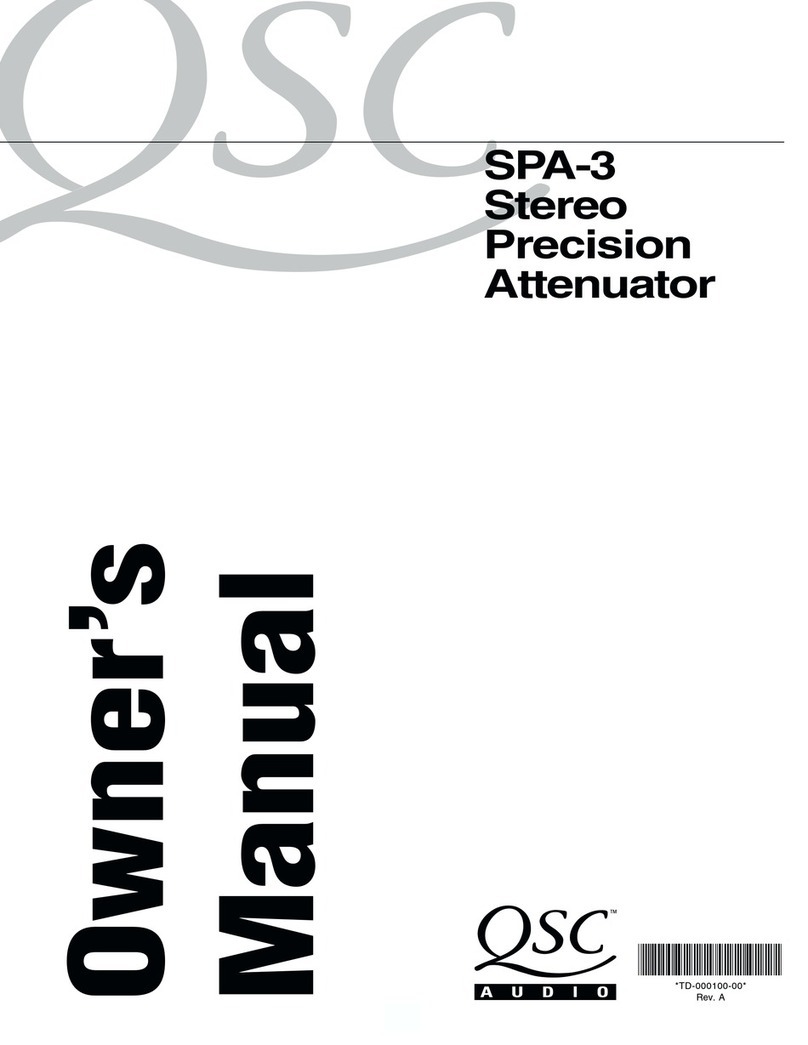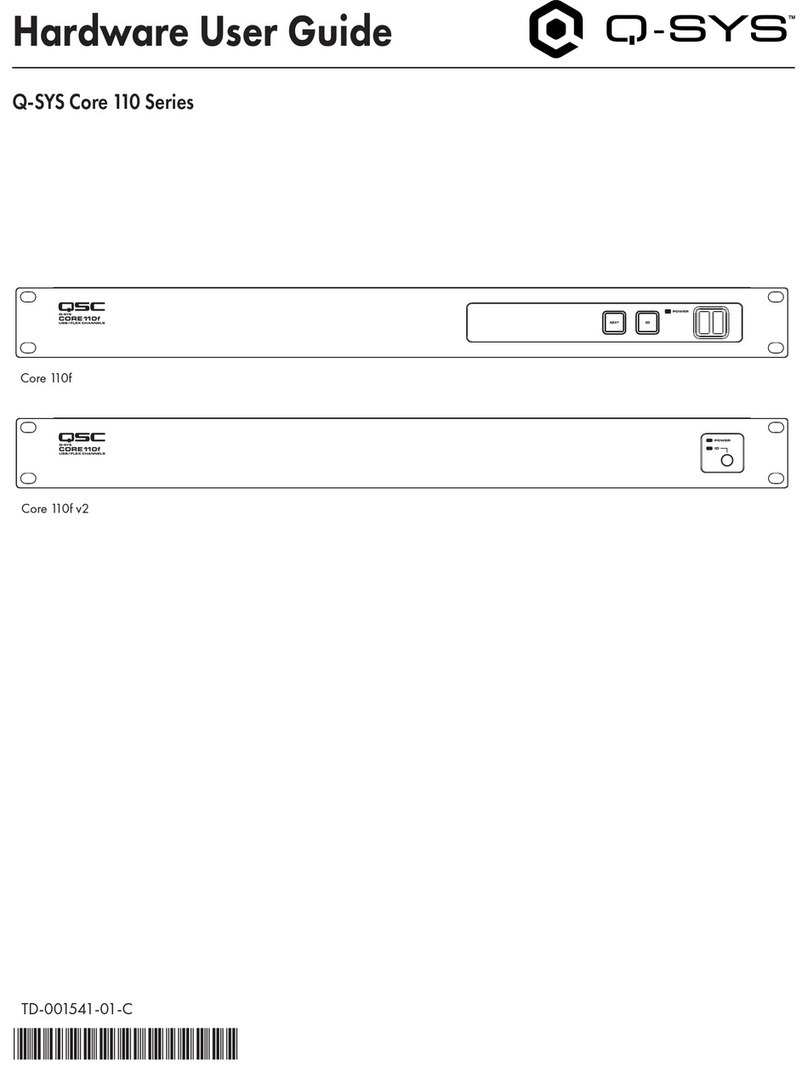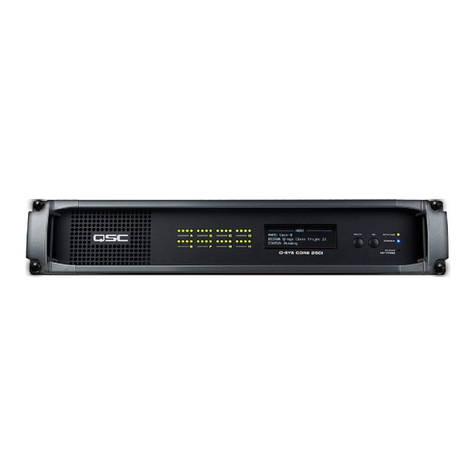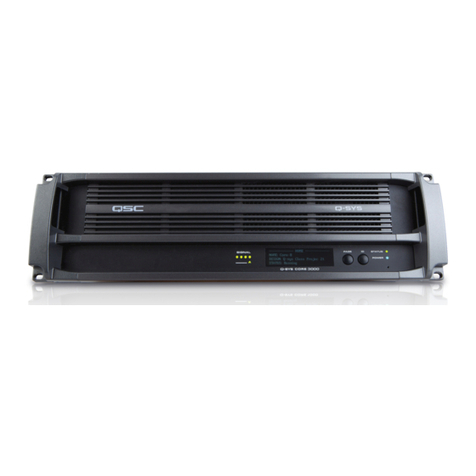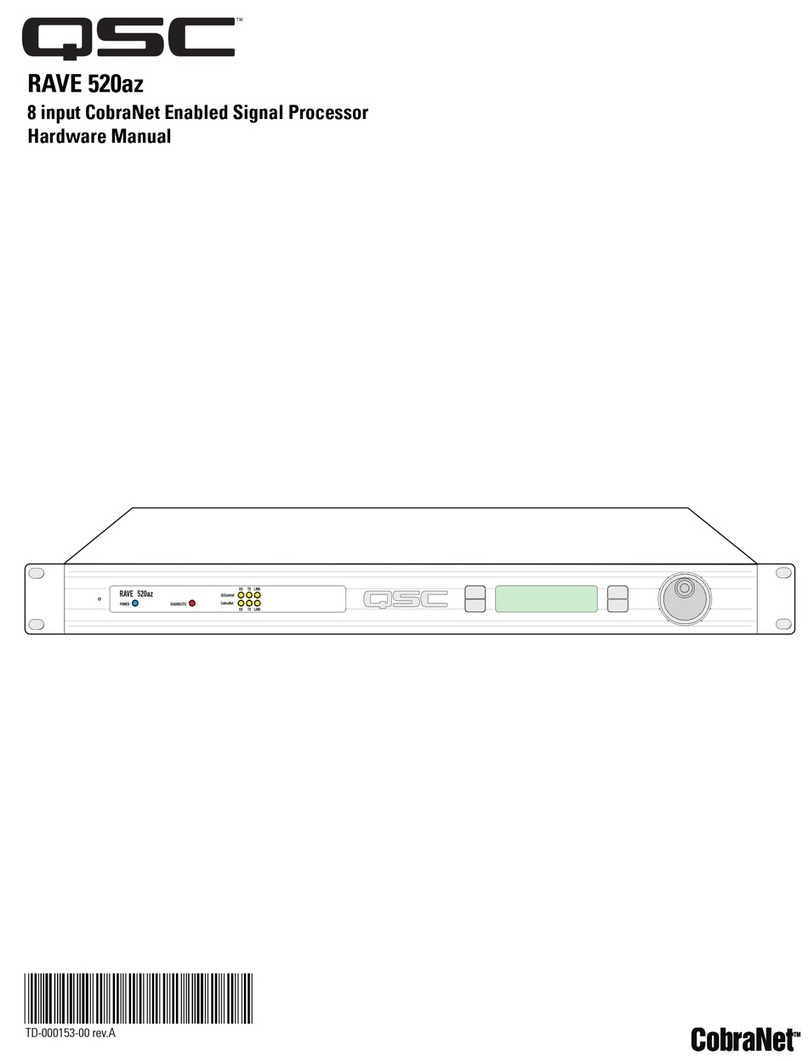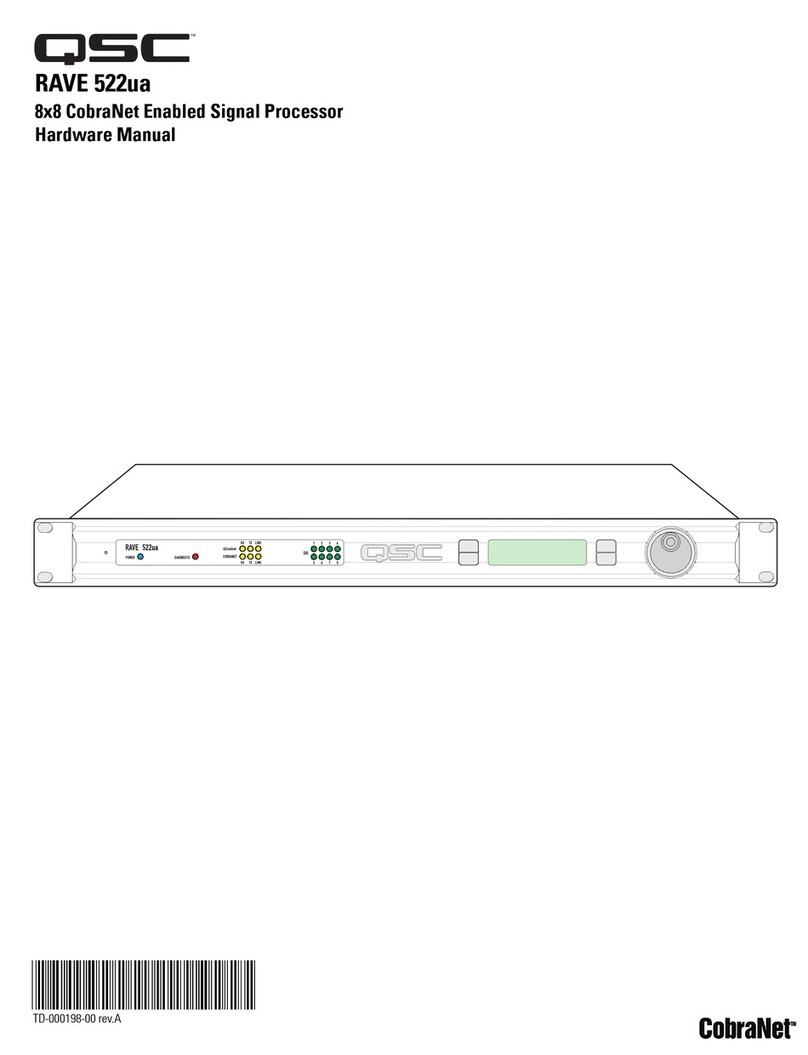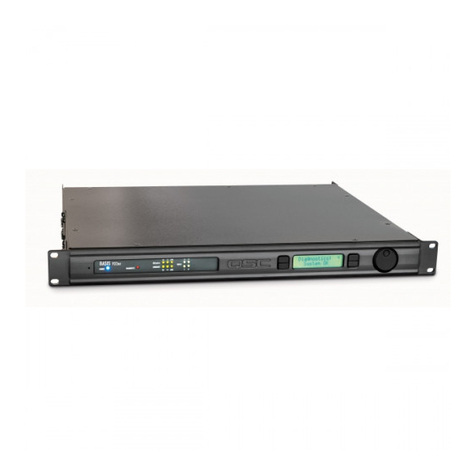
Section 1: Introduction- Overview
5
The DSP-3 is a digital signal processor (
or DSP
) accessory for
audio power amplifiers designed to reduce the need for exter-
nalsignalprocessingwhileincreasingoverallsystemreliability
through distributed intelligence. It is intended primarily for
QSC’s CX, DCA, and Powerlight2 series amplifiers and mounts
directlytotherearpanelofthe2-RU,2-channelmodelsofthese
amplifiers. Pre-August, 1999 date-code of the CX, DCA and
Powerlight2, and all ISA models will require use of an external
power supply. Use of the DSP-3 with Powerlight models
requiresremotemounting, external powersupply and use of a
specialinterconnectcable (PL6.0/9.0only).Refertothe
Appen-
dix
for application information. The DSP-3 can also be used
with amplifiers that do not have a QSC DataPort (older QSC
models, non-QSC models) with a reduced feature set and
“remote” mounting/external power.
Thesignalprocessing capabilities include anInputCom-
pressor-limiter,multipleParametricFilters,High-andLow-Pass
Filters, a Shelf Filter, Muting, Attenuation, Multiple Delays,
Polarity Reversal, Audio Routing and Post Crossover Audio
Mixing. Analog-to-digital and digital-to-analog converters are
24 bit resolution, 48 kHz. sampling rate. Additionally, the post-
DSP output signals are daisy-chainable for connection to a
second amplifier. Input sensitivity is selectable and dynamic
rangeisgreaterthan93dB.Inputsandthepost-DSPoutputsare
electronically balanced. See
Hardware Features
for complete
listing.
Physically, the DSP-3 is a small module that “piggybacks”
ontotheback panelofthespecifiedQSCamplifiers.Itconnects
directly to the DataPort on the back panel and is secured with
suppliedhardware. When usedwithother amplifiers, theDSP-
3ismountedremotelyon arack-mountaccessory thatprovides
a solid physical mounting platform.
Connections include three D-sub type connections; a DB-9
connector acts as the RS-232 interface and an HD-15 through-
connector provides the DataPort interface to the amplifier and
other QSC DataPort products (if used). The “exposed” side has
four terminal block connectors; 2 audio inputs and 2 post DSP
outputs. There is also a power receptacle for using the DSP-3
with amplifiers that do not provide the required power through
theirDataPort,suchastheISA-series, olderQSCamplifiers and
non-QSCamplifiers.Thereare twoLED’s;ablueone toindicate
power status and a green one to indicate the presence of an
input signal to the DSP-3.
Control of the DSP-3 is accomplished with the supplied QSC
Signal Manager software. Networked control using the
QSControl platform is also possible (refer to QSControl docu-
mentationfordetails).Pleaserefertothesoftwaredocumenta-
tion(softwareHelpfileand Readme.txtfile)forfeature-setand
operation information. This software provides an easy-to-use
graphical user interface where DSP “objects” are placed onto
apaletteandinterconnectsaredrawn.Thisinterfaceallowsfor
almost infinite configuration possibilities.
Connection of the DSP-3 to the host computer is made by
connectinga serialcablebetweentheDSP-3’sRS-232portand
the host PC’s available COM port. Once the DSP-3 has been
setup as desired and the configuration saved to the DSP-3,
connection to the PC is no longer required. This feature allows
essentially tamper-proof amplifier DSP setup. Further changes
can be implemented in the field by simply connecting a PC (i.e.
laptop computer) and loading the new setup into the DSP-3.
Note: Powerlight 6.0 and Powerlight 9.0 amplifiers require that pin #9 be removed from the remote
mounting interconnect cable. Amplifier damage may result from use of cable that has pin #9 connections present.
Normal VGA computer monitor cables have pin #9 removed and are usable. Check before use!
